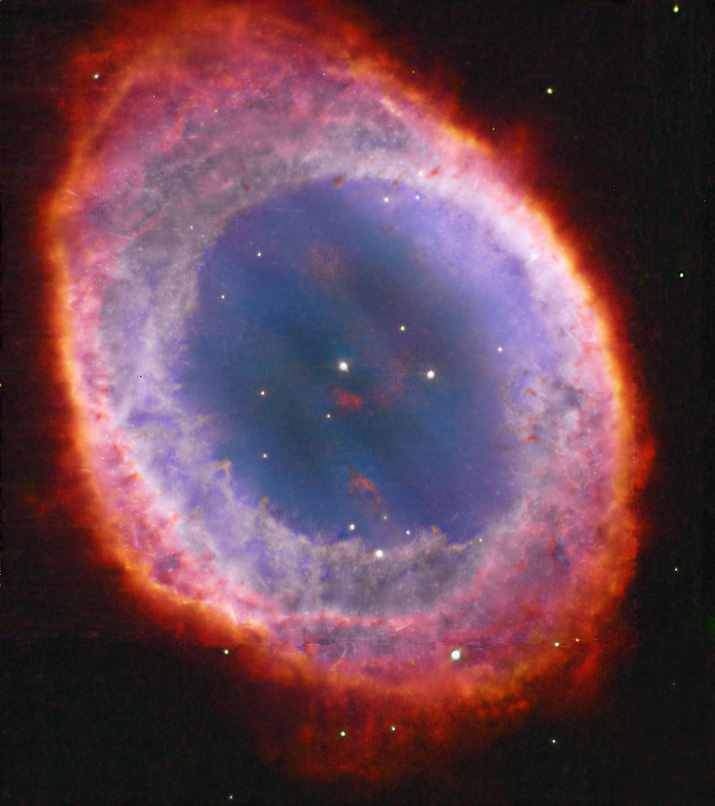
|
Processed Aug. 13, 2012 by Donald Waid Images from the Hubble Legacy Archive Camera: WFPC2 - Filters: Red (Ha: f658n & SII: f673n) Green (V: f547m) Blue (OIII: f502n) Click on the image below to view at higher resolution. --> |
|
M57, commonly known as the Ring Nebula, is one of the best examples of the fate awaiting stars like our own sun. When stars between one to eight solar masses deplete their supply of hydrogen fuel they enter the Red Giant phase of stellar evolution. During this phase the star begins to fuse Helium, and later other heavier elements, and expands greatly in size. This is a violent and often chaotic process. The outer gaseous envelope of the star is expelled until all that is left is the very dense core of the dying star. This core, no longer able to fuse elements, starts to collapse with its temperature reaching up to 200,000 degrees. Their isn’t enough mass in stars of this size for them to explode as a super nova. What is left is a super dense, planet sized, white dwarf star. This intensely hot white dwarf, emits ultraviolet radiation that excites the previously expelled gases. The excited gases glow with the characteristic colors the constituent elements of the nebula surrounding the, now dead, stellar core. This results in a colorful planetary nebulae such as the beautiful Ring Nebula displayed in this image. Dr. Rob Gendler describes in detail this process and how it relates to M57. His article may be viewed here. This image was assembled with data obtained from the Hubble Legacy Archive. The image is a mapped color image using three narrowband filters and one medium “V” band filter. (SII and Ha mapped to red, V band mapped to green, OIII mapped to blue.)
1Based on observations made with the NASA/ESA Hubble Space Telescope, and obtained from the Hubble Legacy Archive, which is a collaboration between the Space Telescope Science Institute (STScI/NASA), the Space Telescope European Coordinating Facility (ST-ECF/ESA) and the Canadian Astronomy Data Centre (CADC/NRC/CSA).
|
